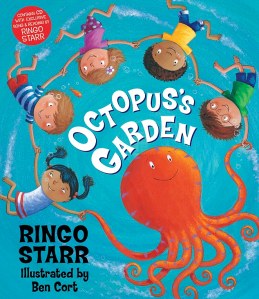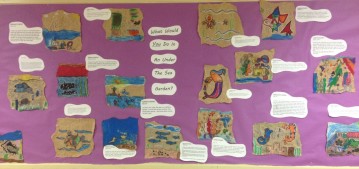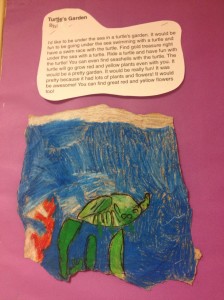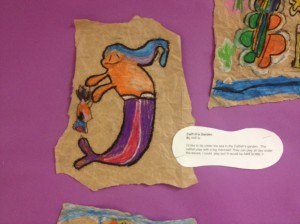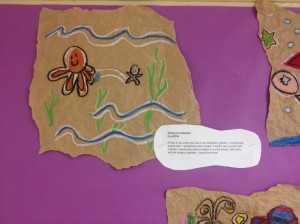All in one comprehension with JINGLE DANCER by Cynthia Leitich Smith
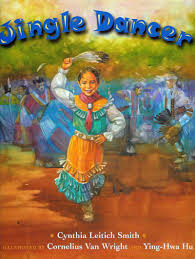
I always start my Comprehension All in One by carefully choosing a picture book which connects to the curriculum and which my students will find engaging. Once I have a book I like, I peruse it carefully. I put sticky notes on the cover with the titles of I want to be addressing with my students-visualizing, making connections, questioning etc. Once I have decided if the book will help me address all the strategies I want it to, I start planning what I will put on my anchor charts. 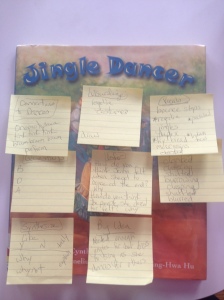 Because I have already taught all the comprehension strategies through the Think Aloud process, we often refer back to those co-constructed anchor charts. I never use prefab materials as I feel it is essential to build this knowledge with students. Current research also tells us not to teach the strategies in separate silos, but rather have the students know how to access the strategy when they need it. “How does this help me as a reader?” I then prepare parts of these anchor charts ahead of time. Most of the details are filled in with the students. I make sure to teach the difficult vocabulary ahead of time. In this case I took words from the glossary at the back and added a few that I felt students would have trouble with. Students then chose to illustrate the words.
Because I have already taught all the comprehension strategies through the Think Aloud process, we often refer back to those co-constructed anchor charts. I never use prefab materials as I feel it is essential to build this knowledge with students. Current research also tells us not to teach the strategies in separate silos, but rather have the students know how to access the strategy when they need it. “How does this help me as a reader?” I then prepare parts of these anchor charts ahead of time. Most of the details are filled in with the students. I make sure to teach the difficult vocabulary ahead of time. In this case I took words from the glossary at the back and added a few that I felt students would have trouble with. Students then chose to illustrate the words.
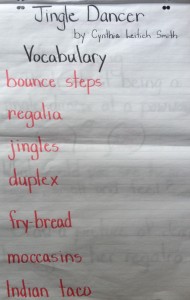
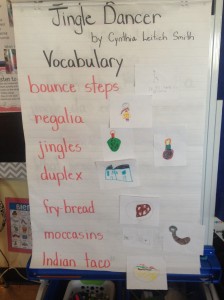
I always start my process with questioning-we look at the cover of the book and I print some of their questions on the chart. I find this can go on and on so I am careful to remind them to ask BIG Questions, and I do not take too many. Once I have the before questions, I remind students that we might not always find answers to our questions and as long as that does not stop us from understanding the story, that’s ok. We read the story asking questions as we go. I record student’s initials beside their questions so that I have a record of who is asking questions, and what kinds of questions they are asking.
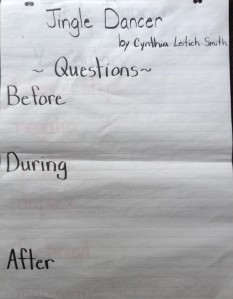
I then move on to Making Connections. Some teachers call this Schema, others call it background knowledge. The term is not important if you are consistent, the metacognitive action of the student is what matters. In this situation the anchor chart just indicates what we are doing. This is a totally oral activity. I have a feather for the students to pass and hold when they are speaking. For my assessment, I record if the students were on topic, if they passed or if they were off topic. It is a great opportunity to work on manners and respectful listening and sharing.
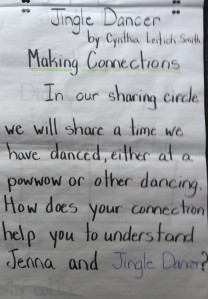
After making connections I move on to visualizing. If children were unable to make a connection they will not be able to visualize. They will need more support. We spend a lot of time practicing the sharing process. Knee to knee, eye to eye, listen, talk and discuss. I reinforce the suggestions of Debbie Miller to be respectful listeners and never complain about who they are partnered with. I assess visualizing by listening to their conversations, looking at their drawings and having them explain their visualizations. I don’t get to each child each time, but I start with the ones I have concerns about from my previous checklists.

Click here to see some of the art the children created. Some of the boys were able to visualize themselves as girls doing the Jingle Dance, but others chose to do other dances they were familiar with such as Hoop Dancing and Hip Hop.
After visualizing we move to inferring. I find that the more we have worked on the strategies, the harder it is to separate them. Sometimes the students are having me add to different charts at the same time.
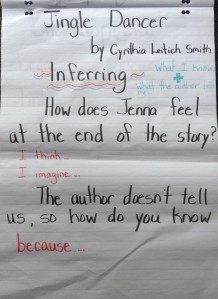
Next we move to Synthesizing. My version of synthesizing is quite simple. When we are dealing with very young readers, I want them to take all the ideas in the story and be able to synthesize that. I don’t want it to be so hard for them that they don’t even try. As they become more adept at synthesizing I add more detail to it. It is essential to have students be able to explain why or why not. Sometimes I do that orally, sometimes on paper, sometimes with a partner. Without being able to explain their reasoning they are not synthesizing. Once they are able we move on to adding new knowledge and adding that in.
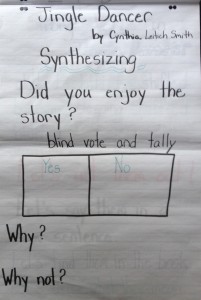
Finally we end by a class discussion. Usually students are so comfortable with the book that it is a pretty easy conversation. We then return to our questions to make sure we have answered them. If we can’t we talk about where we might find the answers.
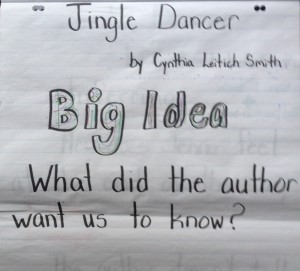
Tip: There is no room to store all of the anchor charts in your classroom. Take photos of them and keep the photos in a binder that is easy for students to access. They will refer back to the binder as they work on their metacognitive skills.
Jingle dancer has some strong verbs and great onomatopoeia as well. I would use the verbs in body breaks to get the moving and thinking. I would use the Onomatopoeia to springboard into more in other books.
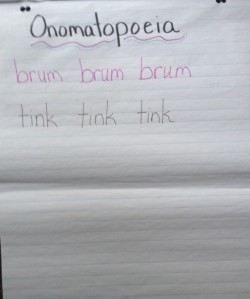
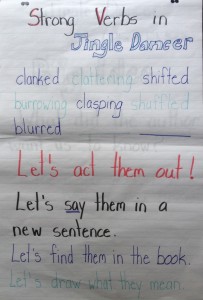
Further information on Jingle Dancer http://www.cynthialeitichsmith.com/lit_resources/diversity/native_am/teaching/TeachingRespect.html A non-fiction book I used to build knowledge at student level.
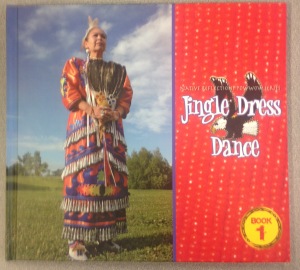
F
